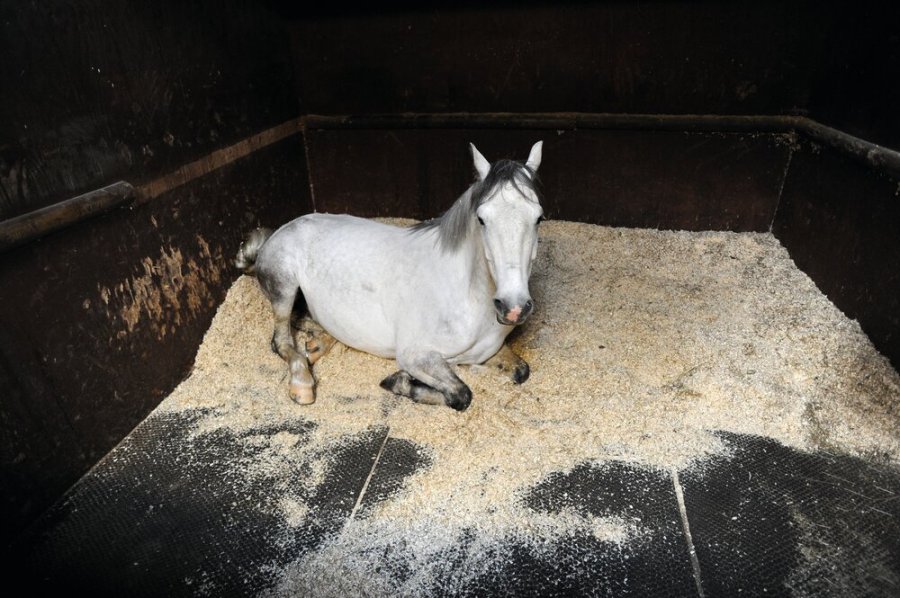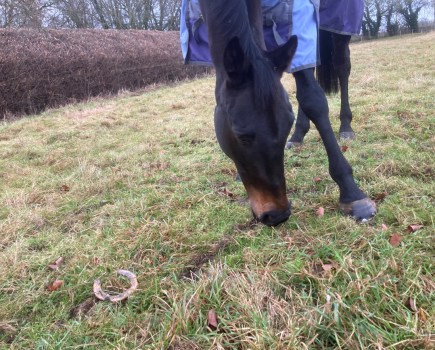The earlier you recognise that your horse is colicking and call the vet, the greater your horse’s chances of making a full recovery. Emmeline Hannelly, welfare education manager at the British Horse Society, explains how to identify colic, including the lesser-known subtle signs, using the charity’s REACT campaign.
REACT stands for the following:
- Restless or agitated
- Eating less or droppings reduced
- Abdominal pain
- Clinical changes
- Tired or lethargic
Horse owners tend to think of the well-known symptoms of colic and wait until they see these appear before calling a vet, but this wastes time and could be the difference between the horse surviving or not.
Clinical signs
In terms of clinical changes, the biggest thing for your horse’s health is knowing what his baseline measurements are. By knowing what’s normal for your horse, you’ll be able to spot potential issues quicker.
Clinical changes include:
- Increased heart rate
- Reduced or absent gut sounds
- Changes in the colour of gums
- Rapid breathing rate
- Skin abrasions over the eyes
Skin abrasions are an indication that there’s a problem, for example, if you notice them after your horse has been in the stable overnight. It could be that he’s had colic overnight and has been thrashing around in the stable and caught himself over his eye.
Heart rate
It’s good to become familiar with your horse’s normal heart rate. Measuring his heart rate regularly will help you become accustomed to what’s usual for him and can also help your vet too.
Always ensure you take his heart rate when he’s relaxed and at rest, rather than straight after exercise when it might be elevated.
Rolling
There’s a big myth that you shouldn’t allow your horse to roll if you suspect colic as it could cause a twisted gut. The University of Nottingham* hasn’t found any evidence to suggest that this might be true and allowing your horse to roll doesn’t cause a twisted gut.
Safety first
The best thing to consider is safety. If your horse is in his stable, thrashing around in pain, don’t go in there with him as you put yourself at risk. Call your vet as soon as you can.
Remove any buckets or objects from your stable that your horse could hurt himself on if he’s thrashing about in pain. This will also stop him eating, which is important while waiting for your vet.
If your horse is up and standing quietly, put him in a quiet area until your vet arrives.
Walking around
If he’s in severe pain and trying to get down and roll (and it’s safe for you to do so) put your horse in a safe area – such as a well-bedded stable or arena.
Don’t let your horse go loose if you take him into an arena. If you take him into an arena and he’s in significant pain, gentle walking for 15-20 minutes can help and won’t harm him.
The golden rule is, call your vet as soon as you suspect colic.
* The BHS’s REACT campaign was set up four years ago following a five-year project by the University of Nottingham, which showed that 90% of horse owners didn’t feel confident in spotting the early signs of colic. The research team also discovered that colic accounts for one in three emergency vet call outs, with one in 10 of these being critical cases. Of the critical cases, 80% of the horses either died or were euthanised. Had people been able to recognise the early signs, these horses might have been saved.
Your Horse’s First Aid Week is brought to you in partnership with Absorbine









